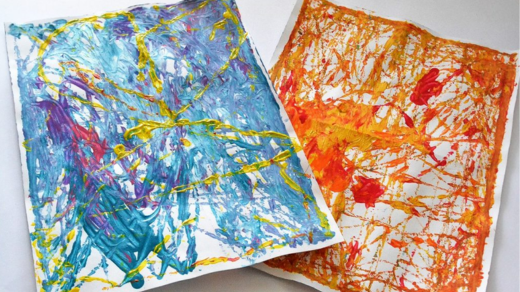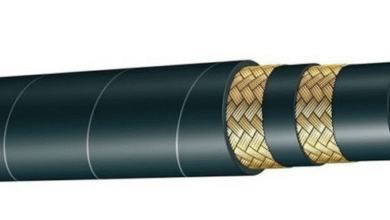Texture Matters: The Appeal of Art of Marble’s Leathered Finish

Discover the allure of marble’s leathered finish in this article exploring how texture plays a pivotal role in the aesthetic appeal of art. From its velvety touch to its unique visual depth, uncover why the tactile quality of this finish adds a luxurious and timeless element to marble surfaces.
Art of Marble, found at https://www.artofmarble.com.au, showcases how the leathered finish transforms marble into a sensory masterpiece. The article delves into the intricate dance between texture and light, revealing how this finish enhances marble’s beauty, making it an enduring choice for those seeking elegance and sophistication in their spaces.
Understanding the Leathered Finish
The leathered finish is a popular choice for natural stone countertops, such as granite and marble, due to its unique texture and appearance. This finish is achieved through a process that involves brushing the stone surface with diamond-tipped brushes, which creates a soft, matte finish with a slight sheen. The leathered finish retains the natural color variations and patterns of the stone while providing a more tactile and organic feel compared to polished or honed finishes. The texture of a leathered finish is slightly rough to the touch, offering a more natural and rustic look that can add warmth and character to a space.
One of the key benefits of a leathered finish is its ability to hide fingerprints, water spots, and smudges, making it a practical choice for high-traffic areas like kitchens and bathrooms. The subtle texture of a leathered finish also helps to mask any imperfections or etching that may occur over time, making it a low-maintenance option for homeowners. Additionally, the tactile quality of a leathered finish can add a sense of depth and dimension to the stone, creating a visually interesting surface that can enhance the overall design of a room. Overall, the leathered finish offers a balance of beauty and functionality, making it a versatile choice for a wide range of interior design styles.
The Unique Characteristics of Marble
Marble is a metamorphic rock that possesses a unique set of characteristics that set it apart from other natural stones. One of the most distinctive features of marble is its striking veining patterns, which are created by mineral impurities such as clay, silt, and iron oxides. These intricate patterns give each piece of marble a one-of-a-kind appearance, making it a popular choice for luxurious and elegant design applications. Additionally, marble is renowned for its lustrous finish and smooth texture, which contribute to its timeless beauty and appeal.
Another unique characteristic of marble is its durability and longevity. While marble is a relatively soft stone compared to granite or quartz, it is still a highly durable material that can withstand the test of time when properly cared for. Its ability to resist heat and moisture makes it a popular choice for countertops, flooring, and other high-traffic areas in residential and commercial settings. Moreover, marble’s natural cooling properties make it an excellent choice for use in hot climates, as it can help maintain a comfortable temperature indoors. Overall, the unique characteristics of marble make it a versatile and timeless material that adds a touch of sophistication and luxury to any space.
The Art Of Marble Leathered Finish offers a distinctive texture that enhances the natural beauty of marble. This finish reduces the stone’s gloss while providing a tactile feel. It’s particularly appreciated for its slip-resistant properties and is ideal for surfaces that demand both elegance and practicality. Its unique texture emphasizes marble’s inherent variations, making each piece unique. In addition, the leathered finish is particularly adept at hiding smudges and fingerprints. When combined with marble’s innate qualities, the leathered finish contributes to an enduring appeal, meeting both aesthetic and functional needs in diverse environments.
Benefits of Choosing a Leathered Finish
Choosing a leathered finish for your countertops or other surfaces can offer a range of benefits that make it a popular choice among homeowners and designers. One of the key advantages of a leathered finish is its unique texture and appearance. The leathering process involves brushing the surface of the stone to create a soft, matte finish that enhances the natural beauty of the material. This finish not only adds a touch of elegance and sophistication to your space but also helps to mask any imperfections or fingerprints, making it a practical choice for high-traffic areas like kitchens and bathrooms. Additionally, the leathered finish is less reflective than polished surfaces, reducing glare and making it easier on the eyes in bright lighting conditions.
Another benefit of choosing a leathered finish is its durability and resistance to staining. The texture of the leathered surface helps to conceal minor scratches and wear over time, maintaining the appearance of the stone for longer without the need for frequent maintenance. Additionally, the leathering process often involves applying a sealant that provides an extra layer of protection against spills and stains, making it easier to clean and maintain your surfaces. This makes leathered finishes a practical choice for busy households or commercial spaces where durability and easy maintenance are essential considerations.
Popular Applications for Leathered Marble
Leathered marble is a popular choice for kitchen countertops due to its unique texture and finish. The leathered surface provides a slightly rougher feel compared to polished marble, making it more resistant to scratches and stains. This makes it an ideal option for high-traffic areas like the kitchen where durability is important. Additionally, the leathered finish adds a touch of sophistication and elegance to the space, making it a popular choice for homeowners looking to elevate the look of their kitchen.
Another popular application for leathered marble is in bathroom vanities. The luxurious appearance of leathered marble can transform a plain bathroom into a spa-like retreat. The textured surface of leathered marble adds depth and character to the vanity, creating a focal point in the bathroom. Its durability and resistance to water damage make it a practical choice for a space that is exposed to moisture on a daily basis. Overall, leathered marble is a versatile material that can be used in various applications to enhance the aesthetic appeal and functionality of a space.
Comparing Leathered Finish to Other Marble Finishes
Leathered finish is a unique and increasingly popular choice for marble countertops and surfaces, valued for its distinctive texture and appearance. Unlike polished or honed finishes, leathered marble undergoes a specialized process that creates a soft, matte surface with a slightly rough texture. This finish retains the natural color variations and patterns of the marble while providing a more tactile and organic feel. In comparison to polished marble, leathered finish is less reflective and therefore more forgiving in terms of showing fingerprints, water spots, or smudges, making it a practical choice for high-traffic areas like kitchens. The leathered finish also adds depth and character to the marble, enhancing its natural beauty and creating a warm, inviting ambiance in any space.
When comparing leathered finish to honed marble, the main difference lies in the texture and sheen of the surface. While honed marble has a smooth, matte appearance, leathered marble offers a more tactile feel with a subtle sheen that adds depth and dimension to the stone. Leathered marble is also more resistant to etching and scratching compared to honed finishes, making it a durable option for countertops and surfaces that are subjected to daily use. Additionally, the leathered finish can bring out the unique veining and characteristics of the marble, giving it a more distinct and personalized look. Overall, the choice between leathered, polished, and honed marble finishes ultimately depends on personal preference and the desired aesthetic for the space.
How to Care for Leathered Marble Surfaces
Caring for leathered marble surfaces is important to maintain their beauty and durability. To start, it is crucial to regularly clean the surface using a mild soap or pH-neutral cleaner and warm water. Avoid using harsh chemicals or acidic cleaners, as they can damage the finish of the leathered marble. Use a soft cloth or sponge to gently wipe down the surface, removing any dust, dirt, or spills. It is also recommended to dry the surface thoroughly after cleaning to prevent water spots or streaks from forming.
In addition to regular cleaning, it is important to protect leathered marble surfaces from scratches and abrasions. Use coasters or placemats under glasses, plates, and other items to prevent scratching the surface. Avoid dragging heavy or sharp objects across the marble, as this can cause permanent damage. It is also advisable to reseal the leathered marble surface periodically to maintain its protective barrier and ensure longevity. By following these care tips, you can preserve the beauty and quality of your leathered marble surfaces for years to come.
Design Tips for Incorporating Leathered Marble
When incorporating leathered marble into a design, it’s important to consider the overall aesthetic you want to achieve. Leathered marble offers a unique texture that can add warmth and sophistication to any space. To make the most of this material, consider pairing it with contrasting elements such as sleek metal finishes or rich wood tones. This will help create a visually dynamic look that highlights the beauty of the leathered marble. Additionally, think about the color palette of the marble and how it will complement the other materials and furnishings in the room. Neutral tones like beige, grey, or taupe can provide a versatile base for a variety of design styles, while bolder hues like deep green or navy can make a statement in a more dramatic way.
In terms of application, leathered marble can be used in a variety of ways to enhance the overall design of a space. Consider incorporating leathered marble as a focal point, such as a kitchen island countertop or a fireplace surround, to draw attention to its unique texture and beauty. Alternatively, use leathered marble as an accent material in smaller doses, like a backsplash in a bathroom or a tabletop in a living room, to add a touch of luxury without overwhelming the space. Remember to also consider the maintenance of leathered marble and choose appropriate sealing products to protect it from stains and scratches, ensuring its longevity and beauty for years to come.
Cost Considerations of Leathered Marble
Leathered marble is a luxurious and sophisticated option for countertops and other surfaces in a home. When considering the cost of leathered marble, several factors come into play. Firstly, the quality and rarity of the marble itself will greatly impact the price. High-end marble varieties such as Calacatta Gold or Statuario will be more expensive than more common options like Carrara. Additionally, the size of the project and the amount of marble needed will also affect the overall cost. Custom cuts and intricate designs will require more marble and therefore increase the price. Installation costs must also be considered, as leathered marble typically requires professional installation to ensure a flawless finish.
Another cost consideration with leathered marble is maintenance. While leathered marble is known for its durability and resistance to stains, it still requires regular care to maintain its appearance over time. Sealing the surface periodically and using the appropriate cleaning products are important steps in preserving the beauty of leathered marble. These maintenance costs should be factored into the overall budget when choosing leathered marble for a project. Additionally, the longevity of leathered marble should be taken into account when considering its cost, as its timeless elegance and durability can make it a worthwhile investment in the long run.
Trending Colors in Leathered Marble
Trending colors in leathered marble are evolving to meet the demands of modern interior design trends. One popular choice is the elegant and timeless white leathered marble, which exudes a luxurious and sophisticated look. The soft, matte finish of white leathered marble creates a sense of warmth and texture, making it a versatile option for a variety of design styles. Another trending color in leathered marble is the rich and dramatic black marble, which adds a touch of opulence and drama to any space. The leathered finish of black marble enhances its natural veining and depth, creating a striking visual impact that elevates the overall aesthetic of a room.
In addition to classic white and black options, trending colors in leathered marble also include earthy tones such as beige, taupe, and olive green. These warm and inviting hues bring a sense of nature and tranquility into interior spaces, creating a harmonious and relaxing atmosphere. The leathered finish of these earthy-colored marbles adds a tactile quality that enhances the organic beauty of the stone, making them a popular choice for those seeking a more natural and grounded design aesthetic. Whether used for countertops, flooring, or accent walls, these trending colors in leathered marble offer a luxurious and sophisticated touch to any interior design project.
Expert Insights on Leathered Marble Finishes
Leathered marble finishes have gained popularity in recent years due to their unique texture and appearance. Expert insights on leathered marble finishes emphasize the versatility and durability of this finish. The leathered texture adds depth and character to the marble, giving it a more natural and rustic look compared to polished or honed finishes. Design experts recommend using leathered marble in high-traffic areas such as kitchen countertops or bathroom vanities, as it is less prone to showing scratches and etching than polished marble. Additionally, the leathered finish can enhance the natural colors and veining of the marble, making each slab truly unique.
Interior designers and architects also appreciate the tactile quality of leathered marble finishes. The textured surface provides a tactile element that adds interest and dimension to a space. Experts suggest using leathered marble in both traditional and contemporary designs, as it can complement a wide range of styles. When it comes to maintenance, professionals recommend sealing leathered marble to protect it from stains and enhance its longevity. Overall, expert insights on leathered marble finishes highlight its aesthetic appeal, durability, and versatility, making it a popular choice for both residential and commercial projects.



